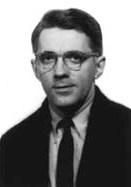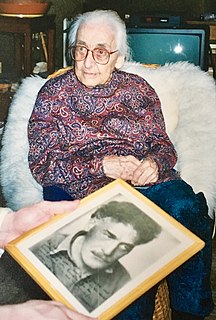
David Eugene Tudor was an American pianist and composer of experimental music.

Morton Feldman was an American composer. A major figure in 20th-century classical music, Feldman was a pioneer of indeterminate music, a development associated with the experimental New York School of composers also including John Cage, Christian Wolff, and Earle Brown. Feldman's works are characterized by notational innovations that he developed to create his characteristic sound: rhythms that seem to be free and floating, pitch shadings that seem softly unfocused, a generally quiet and slowly evolving music, and recurring asymmetric patterns. His later works, after 1977, also explore extremes of duration.

Christian G. Wolff is an American composer of experimental classical music and classicist.
Earle Brown was an American composer who established his own formal and notational systems. Brown was the creator of "open form," a style of musical construction that has influenced many composers since—notably the downtown New York scene of the 1980s and generations of younger composers.
Howard While Skempton is an English composer, pianist, and accordionist.

Grete Sultan was a German-American pianist. Born in Berlin into a musical Jewish family, she studied piano from an early age with American pianist Richard Buhlig, and later with Leonid Kreutzer and Edwin Fischer. In 1933, after the nazis came to power in Germany, she was, as all Jews were, banned from playing in public and could only appear in concerts of the "Jüdischer Kulturbund".
Structures I (1952) and Structures II (1961) are two related works for two pianos, composed by the French composer Pierre Boulez.

The Klavierstücke constitute a series of nineteen compositions by German composer Karlheinz Stockhausen.
Indeterminacy is a composing approach in which some aspects of a musical work are left open to chance or to the interpreter's free choice. John Cage, a pioneer of indeterminacy, defined it as "the ability of a piece to be performed in substantially different ways".
Music of Changes is a piece for solo piano by John Cage. Composed in 1951 for pianist and friend David Tudor, it is a ground-breaking piece of indeterminate music. The process of composition involved applying decisions made using the I Ching, a Chinese classic text that is commonly used as a divination system. The I Ching was applied to large charts of sounds, durations, dynamics, tempo and densities.

Etudes Australes is a set of etudes for piano solo by John Cage, composed in 1974–75 for Grete Sultan. It comprises 32 indeterminate pieces written using star charts as source material. The etudes, conceived as duets for two independent hands, are extremely difficult to play. They were followed by two more collections of similarly difficult works: Freeman Etudes for violin (1977–90) and Etudes Boreales (1978) for cello, or piano, or both together.
American avant-garde composer John Cage (1912–1992) started composing pieces for solo prepared piano around 1938–40. The majority of early works for this instrument were created to accompany dances by Cage's various collaborators, most frequently Merce Cunningham. In response to frequent criticisms of prepared piano, Cage cited numerous predecessors. In the liner notes for the very first recording of his most highly acclaimed work for prepared piano, Sonatas and Interludes, Cage wrote: "Composing for the prepared piano is not a criticism of the instrument. I'm only being practical." This article presents a complete list of Cage's works for prepared piano, with comments on each composition. All of Cage's indeterminate works for unspecified forces can also be performed on or with Prepared Piano.
Music for Piano is a series of 85 indeterminate musical compositions for piano by American avant-garde composer John Cage. All of these works were composed by making paper imperfections into sounds using various kinds of chance operations.

Piano and String Quartet is a composition by American avant-garde composer Morton Feldman. It was commissioned by the Kronos Quartet and pianist Aki Takahashi, who premiered the piece at the 7th annual New Music America Festival in Los Angeles and released a studio recording in 1993.

Refrain for three players is a chamber music composition by Karlheinz Stockhausen, and is number 11 in his catalog of works.

Jan Williams is a percussionist, arts administrator, teacher, conductor, and composer who has championed avant-garde and progressive music in the United States. He is recognized as an important proponent of percussion performance and its literature.
Amy Williams is an American composer and pianist. She was born in Buffalo, New York, into a musical family, with her mother being a violist with the Buffalo Philharmonic Orchestra, and her father being a percussionist and professor emeritus at the university at Buffalo.
But what about the noise of crumpling paper which he used to do in order to paint the series of "Papiers froissés" or tearing up paper to make "Papiers déchirés?" Arp was stimulated by water, forests, sometimes shortened as But what about the noise..., is a composition for percussion ensemble by American composer John Cage. It was finished in 1985.

Piece for Four Pianos is a musical composition for four pianos by American composer Morton Feldman. It was finished in 1957.









